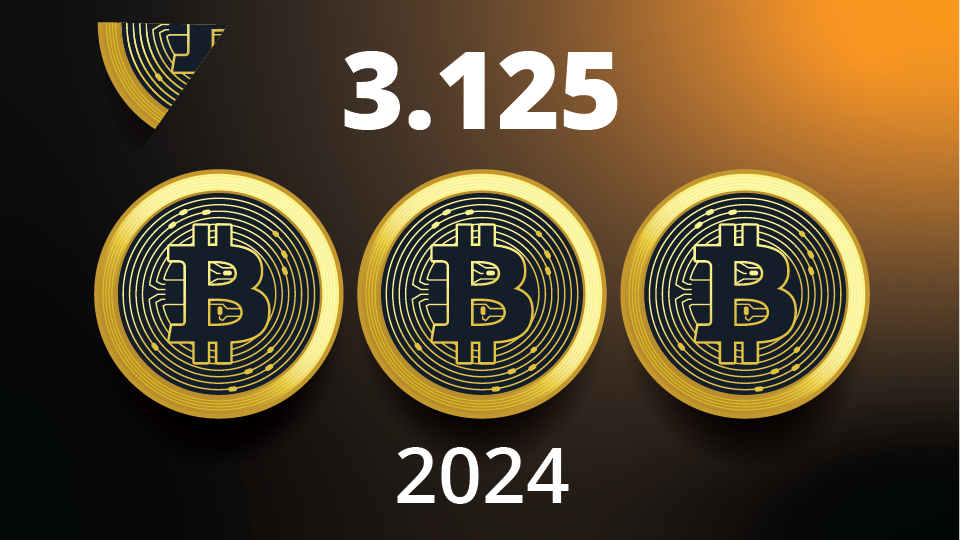Bitcoin vs. Ethereum in 2024: Comparison & Outlook
March 27, 2024
Read Time 10+ MIN
Bitcoin vs Ethereum: Understanding the Key Differences and Similarities
In the rapidly evolving world of digital finance, two names consistently stand out: Bitcoin and Ethereum. These blockchain-based giants are not just cryptocurrencies; they represent the forefront of a financial revolution. While Bitcoin and Ethereum share the common ground of being blockchain-based cryptocurrencies, their differences are profound. Bitcoin, the original cryptocurrency, was created as a decentralized digital currency for transactions. Ethereum, on the other hand, is a platform that enables smart contracts and decentralized applications (DApps) to be built and operated without any downtime, fraud, control, or interference.
- Genesis of Bitcoin & Ethereum
- Technical Comparison
- Market Performance
- Practical Uses
- Developer Ecosystem
- Investment Perspectives
- Long Term Outlooks
The Surge of Interest in Bitcoin and Ethereum
Bitcoin and Ethereum’s growing intrigue reflects not just a trend, but a broader acceptance of cryptocurrencies. Bitcoin, as the trailblazer, has become a digital synonym for value storage, akin to gold, attracting a vast pool of investors. Ethereum, with its smart contracts, ushers in a new era of digital applications, extending blockchain’s utility beyond simple transactions, including finance, gaming, and decentralized autonomous organizations (DAOs).
Digital Market Dynamics: Bitcoin and Ethereum
Bitcoin and Ethereum have significantly influenced the digital market, driving the adoption of cryptocurrency for both investment and technological innovation. Bitcoin's robust network and widespread acceptance have made it a cornerstone of the crypto economy, often serving as a gateway for newcomers into the world of digital assets. Ethereum's contribution lies in its ability to facilitate the development of a new internet layer, commonly referred to as Web3, which is decentralized and open, running on blockchain technology.
Philosophical and Technological Divergence
The philosophical and technological foundations of Bitcoin and Ethereum differ greatly. Bitcoin was crafted with a laser focus on decentralization and security, and scarcity. Its blockchain primarily serves as a public ledger for transactions. On the other hand, Ethereum was envisioned to expand on Bitcoin's capabilities, introducing a platform to foster technological innovation, enabling a wide array of applications through its smart contracts.
Bitcoin operates on a proof-of-work (PoW) consensus mechanism, which, while secure, has been criticized for its environmental impact. Ethereum has transitioned to a proof-of-stake (PoS) mechanism, known as Ethereum 2.0, which aims to be more energy-efficient and scalable, marking a significant evolutionary step in its development. This fundamental shift in consensus mechanism highlights the divergent paths these two cryptocurrencies are taking toward achieving their respective goals.
The Genesis of Bitcoin and Ethereum
The inception of Bitcoin and Ethereum marked significant milestones in the evolution of digital finance, introducing the world to the concepts of blockchain and decentralized finance (DeFi). These technologies have revolutionized how we perceive money, investment, and the internet's architecture, laying the groundwork for a more transparent, secure, and accessible financial system.
Bitcoin Origins
Bitcoin was conceptualized in a 2008 white paper by an individual or group under the pseudonym Satoshi Nakamoto. Launched in January 2009, Bitcoin introduced the first viable solution to the double-spending problem without the need for a trusted authority or central server. Its creation sparked the beginning of digital currency, aiming to enable direct transactions between parties securely, efficiently, and at minimal cost. As the first cryptocurrency, Bitcoin demonstrated the potential of the blockchain to support a decentralized financial system, establishing itself as a digital alternative to traditional fiat currencies and as a store of value, often referred to as "digital gold."
Ethereum Origins
Ethereum, proposed in late 2013 by programmer Vitalik Buterin, extended the blockchain's applications beyond Bitcoin's initial scope. Launched in 2015, Ethereum introduced the concept of a blockchain platform capable of executing smart contracts—self-executing contracts with the terms of the agreement directly written into code. This innovation opened up possibilities for decentralized applications (DApps) across various sectors, not just in finance. Ethereum's development was driven by the desire to harness blockchain technology's power for a broader range of applications, making it a foundational pillar for the emerging decentralized web, or Web3.
Bitcoin vs Ethereum: A Technical Comparison
Technologically, Bitcoin and Ethereum differ in purpose, consensus mechanisms, and overall architecture, reflecting their distinct visions.
Consensus Mechanism: Bitcoin employs the Proof of Work (PoW) consensus mechanism, requiring miners to solve complex cryptographic puzzles to validate transactions and create new blocks. Ethereum, has transitioned to Proof of Stake (PoS) with its Ethereum 2.0 upgrade, aiming to improve scalability, security, and energy efficiency.
Block Time: Bitcoin's network is designed to produce a new block roughly every 10 minutes, while Ethereum's average block time is significantly shorter, around 12 seconds under PoS.
Smart Contracts and DApps: Bitcoin's scripting language is intentionally limited to simple transaction types for security purposes. Ethereum, in contrast, was built as a programmable blockchain, enabling developers to create complex smart contracts and decentralized applications.
Supply Limit: Bitcoin has a capped supply of 21 million coins, emphasizing scarcity to preserve value. Ethereum, on the other hand, does not have a fixed supply limit, which is intended to facilitate its broader use in executing smart contracts and running DApps.
These technical distinctions underscore Bitcoin and Ethereum's differing philosophies: Bitcoin as a secure and decentralized digital currency and Ethereum as a platform for building decentralized applications. Both, however, have played pivotal roles in advancing the blockchain and decentralized finance, showcasing the potential of these technologies to transform our digital and financial landscapes.
Key Bitcoin Features
Bitcoin's architecture has several key features that have contributed to its success and widespread adoption as the first decentralized digital currency.
Blockchain Technology: At the heart of Bitcoin lies its blockchain, a distributed ledger that records all transactions across a network of computers. Each “block” in the chain contains a number of transactions, and when a new transaction occurs, it's added to every participant's ledger. This decentralized and public verification process makes it nearly impossible to alter transaction records, enhancing security. Blockchain is the technology underpinning Bitcoin, allowing it to operate independently of a central authority, thus reducing the risk of fraud.
Mining Process: Bitcoin uses a Proof of Work (PoW) consensus mechanism, where miners compete to solve complex mathematical problems to validate transactions and add new blocks to the blockchain. This process secures the network and introduces new bitcoins into circulation as a reward for successful miners.
Transaction Speed and Scalability: Bitcoin aims to process a block every 10 minutes, limiting its transaction speed and capacity. The scalability of Bitcoin has been a topic of discussion, leading to various proposals and updates like Segregated Witness (SegWit) and the Lightning Network to increase its transaction throughput and efficiency.
Scalability Solutions: To address scalability, the Bitcoin community has explored solutions like the Lightning Network, a second-layer protocol that enables off-chain transactions, allowing for faster and more scalable transactions.
To learn more, read VanEck’s Bitcoin 101: A Beginner's Guide.
Key Ethereum Features
Ethereum's design introduces several innovative features that extend the utility of blockchain technology beyond just transactions.
Smart Contracts: Ethereum's most significant contribution is the introduction of smart contracts, self-executing contracts with the terms of the agreement directly written into code. These contracts automatically enforce and execute the terms of an agreement, enabling trustless and decentralized transactions.
Ethereum Virtual Machine (EVM): The EVM is the runtime environment for smart contracts in Ethereum. It is a powerful, sandboxed virtual stack embedded within each full Ethereum node, capable of executing contract bytecode. The EVM enables the development of decentralized applications (DApps) on Ethereum's platform, making it a global computational engine.
Shift to Ethereum 2.0: Ethereum underwent a significant upgrade, known as Ethereum 2.0 or Serenity, transitioning from PoW to a Proof of Stake (PoS) consensus mechanism. This shift aims to address the network's scalability, security, and sustainability issues. Ethereum 2.0 will introduces sharding to increase network capacity and reduce transaction costs, making the platform more efficient and scalable for a broader range of applications.
These features highlight Ethereum's unique position in the cryptocurrency ecosystem, not just as a digital currency but as a foundational platform for building decentralized applications and services. With its shift to Ethereum 2.0, the platform is set to further revolutionize the blockchain space by improving scalability, efficiency, and sustainability.
To learn more about how Ethereum works, read VanEck’s Ethereum 101: A Beginner’s Guide.
Bitcoin and Ethereum Core Differences
The technological frameworks and future scalability plans of Bitcoin and Ethereum highlight their unique positions and objectives within the cryptocurrency ecosystem. The chart below highlights the core technical differences between the two cryptocurrencies:
| Feature | Bitcoin | Ethereum |
| Creator(s) | Satoshi Nakamoto | Vitalik Buterin, Charles Hoskinson, Gavin Wood, Joseph Lubin, and Anthony Di Iorio |
| Launch Date | January 2009 | July 2015 |
| Currency vs. Platform | A credible alternative to traditional fiat currencies (medium of exchange, store of value) | A platform to run programmatic contracts and applications via Ether |
| Consensus Algorithm | Proof-of-Work (PoW) | Proof-of-Stake (PoS) |
| Block Time | 10 minutes on average | 12 seconds on average |
| Transaction Throughput | 7 transactions per second (TPS) | 30 transactions per second (TPS) |
| Supply | Finite supply-capped at 21 million BTC | Infinite supply |
| Scalability Solutions | SegWit, Lightning Network | Ethereum 2.0, Sharding, Plasma |
Technological Frameworks
Bitcoin: Bitcoin's technological framework is designed with a focus on being a secure and decentralized digital currency. Its consensus mechanism, PoW, ensures network security through computational work. Bitcoin's main scalability solutions, such as Segregated Witness (SegWit) and the Lightning Network, aim to improve transaction throughput and efficiency without compromising on decentralization.
Ethereum: Ethereum's framework goes beyond a digital currency, providing a platform for decentralized applications (DApps) through smart contracts. Initially using PoW, Ethereum has transitioned to a PoS consensus algorithm with Ethereum 2.0, aiming to enhance scalability, security, and sustainability.
Future Scalability Plans
Bitcoin: Continues to focus on improving scalability and efficiency through off-chain solutions and protocol improvements without compromising its core principles of security and decentralization.
Ethereum: Ethereum 2.0 represents a significant shift towards addressing scalability and sustainability issues. The introduction of sharding, along with the transition to PoS, is expected to reduce congestion, lower transaction fees, and decrease energy consumption, making the network more scalable and efficient for its wider range of applications.
These core differences underline Bitcoin and Ethereum's distinct approaches to leveraging blockchain technology. Bitcoin remains focused on refining its role as digital gold, a secure and decentralized currency, while Ethereum evolves towards a global, decentralized platform for applications and contracts, aiming for broad scalability and functionality enhancements with its ambitious Ethereum 2.0 upgrade.
Market Performance: Bitcoin Price vs Ethereum
The market performance of Bitcoin and Ethereum provides a fascinating glimpse into the dynamics of cryptocurrency markets. Both have experienced significant price fluctuations over the years, shaped by a variety of factors.
Historical Price Trends
Bitcoin: Since its inception in 2009, Bitcoin has seen a dramatic increase in value, with notable peaks and troughs. Its price remained relatively low until late 2013, when it experienced its first significant surge. The most remarkable peak occurred in late 2017, when Bitcoin's price neared $20,000, followed by a sharp decline. Subsequent years saw more fluctuations, with record highs above $60,000 in 2021 (and again most recently in 2024), demonstrating the volatile yet upward trending nature of Bitcoin's market performance.
Ethereum: Ethereum, launched in 2015, has similarly experienced substantial volatility. Its first significant price increase occurred in 2017, in tandem with the broader cryptocurrency market boom, peaking at around $1,400 in early 2018. Like Bitcoin, Ethereum's price saw dramatic movements, with significant growth in 2020 and 2021, reaching new highs above $4,000, reflecting its growing adoption and the booming DeFi sector.
Factors Influencing Price
Several key factors influence the price of Bitcoin and Ethereum, including market demand, technological upgrades, and investor sentiment.
Market Demand: The demand for Bitcoin and Ethereum is driven by their perceived value and utility. Bitcoin is often seen as a digital gold, a hedge against inflation, and a store of value, leading to increased demand during economic uncertainty. Ethereum's demand is bolstered by its utility in the DeFi and NFT sectors, where it's the backbone for a multitude of applications and platforms.
Technological Upgrades: Technological advancements and upgrades play a crucial role in influencing prices. For Bitcoin, improvements in scalability and security through updates like SegWit and the Lightning Network have positively impacted its price. Ethereum's ongoing transition to Ethereum 2.0, aiming for greater scalability, efficiency, and sustainability with the move to Proof of Stake, has also been a significant factor in its price dynamics.
Investor Sentiment: Investor sentiment, often influenced by news, regulatory changes, and broader economic factors, greatly affects the price of both cryptocurrencies. Positive news, such as institutional adoption, endorsements by high-profile individuals, or favorable regulatory developments, can lead to price surges. Conversely, negative news or uncertain regulatory environments can lead to sharp declines.
Bitcoin vs. Ethereum Performance
Source: Morningstar 2024. Past performance is no guarantee of future results. Not intended as a recommendation to buy or sell any securities named herein.
Practical Uses: From Everyday Transactions to Smart Contracts
Bitcoin is widely used for a variety of everyday financial transactions, remittances, and as a form of digital gold. Its decentralized nature allows for peer-to-peer transactions globally without the need for intermediaries, making it a popular choice for sending and receiving money across borders. Furthermore, Bitcoin's limited supply and independence from governmental control have solidified its status as a digital store of value, akin to gold, appealing to investors looking for a hedge against inflation.
Ethereum, on the hand, with its smart contract functionality, supports a wide range of applications far beyond financial transactions. These applications span finance, gaming, social media, and decentralized autonomous organizations (DAOs), offering a new paradigm for building and using applications on the internet. The Ethereum platform facilitates not only transactions but also complex contractual agreements and decentralized applications, driving innovation in various sectors.
While Bitcoin primarily serves as a digital currency and store of value, Ethereum's utility extends to enabling decentralized applications through its smart contract functionality. This distinction underscores their differing roles in the digital economy: Bitcoin as a foundational digital currency and Ethereum as a platform for decentralized technology development.
Community and Developer Ecosystem: Bitcoin vs Ethereum
Both Bitcoin and Ethereum boast vibrant communities and ecosystems comprising developers, entrepreneurs, and enthusiasts. The open-source nature of these projects encourages widespread participation and collaboration, leading to continuous innovation and improvement.
Bitcoin's Ecosystem: The developer community focuses on enhancing Bitcoin's security, scalability, and privacy. Contributions such as the Lightning Network aim to improve transaction speed and reduce costs, ensuring Bitcoin's viability as a digital currency.
Ethereum's Ecosystem: Ethereum's community is centered around the development of decentralized applications. The ecosystem is rich with developers building on the Ethereum platform, contributing to its position as the leading platform for DApps and smart contracts.
Notable collaborations and projects within each ecosystem, such as the Ethereum Enterprise Alliance and the collaboration between Lightning Network developers and various financial institutions, highlight the ongoing effort to bridge the gap between traditional finance and the cryptocurrency world.
Investment Perspectives: Bitcoin and Ethereum
Bitcoin is often viewed as a store of value, likened to digital gold, appealing to investors looking for a hedge against economic instability. Ethereum, with its broad utility and foundational role in the DeFi and NFT spaces, presents a different investment proposition focused on the potential of decentralized technology.
Investing in either cryptocurrency comes with its risks and rewards, largely influenced by market volatility. However, the long-term potential for both as foundational technologies of a new digital economy offers compelling opportunities for investors. To learn more, read VanEck’s The Investment Case for Bitcoin and Ethereum’s Growth May Redefine Finance.
Bitcoin vs Ethereum: Long Term Outlooks
Expert predictions for Bitcoin and Ethereum are generally optimistic, though they acknowledge the potential for volatility driven by regulatory changes, technological advancements, and market adoption.
At VanEck, we believe in the long-term investment thesis for both Bitcoin and Ethereum. In its early years, bitcoin was largely used by a small group of tech enthusiasts. It was difficult and cumbersome to obtain with limited use cases and very few merchants accepting it as a form of payment. In 2023, bitcoin adoption has grown substantially as it has become more mainstream. Now, more than ever, merchants and businesses are accepting bitcoin as a form of payment and infrastructure has been built to make it more convenient for the average person to use. The development of user-friendly wallets, exchanges, and marketplaces has removed the technical barriers to entry that existed in bitcoin’s early years.
Bitcoin interest among institutional investors has also increased. Hedge funds, asset management firms, and endowments are increasingly recognizing bitcoin’s potential as a store of value and as an effective portfolio diversifier, specifically, when looking through the lens of an uncorrelated asset that has the potential to hedge against inflation.
Thanks to improving functionality, lower take-rates and an ethos of inclusivity, we are bullish on decentralized software protocols as an alternative to existing intermediaries. Among the contenders to capture a majority of economic value—as is common in digital platforms—Ethereum stands out to us as one of the most probable long-term disruptors. According to our recent analysis, we believe Ethereum may emerge as a powerhouse among digital assets, with a predicted token price of $11.8k by 2030. Ethereum's unique approach combines a globally distributed infrastructure, smart contract capabilities, and a digital commerce model that enables trustless transactions.
Conclusion: Navigating the Bitcoin and Ethereum Landscape
Bitcoin and Ethereum each offer unique value propositions: Bitcoin as a secure, decentralized currency and store of value, and Ethereum as a versatile platform for decentralized applications. As the cryptocurrency landscape continues to evolve, staying informed about both Bitcoin and Ethereum's developments, challenges, and opportunities is crucial for anyone interested in the digital economy. Both cryptocurrencies play pivotal roles in shaping the future of finance and technology, offering intriguing potential for innovation and investment.
To receive more Digital Assets insights, sign up in our subscription center.
Related Topics
Related Insights
IMPORTANT DISCLOSURES
Definitions
Bitcoin (BTC) is a decentralized digital currency, without a central bank or single administrator, that can be sent from user to user on the peer-to-peer Bitcoin network without the need for intermediaries.
Ethereum (ETH) is a decentralized, open–source blockchain with smart contract functionality. Ether is the native cryptocurrency of the platform. Amongst cryptocurrencies, Ether is second only to Bitcoin in market capitalization.
Risk Considerations
Please note that VanEck may offer investments products that invest in the asset class(es) or industries included herein.
This is not an offer to buy or sell, or a recommendation to buy or sell any of the securities, financial instruments or digital assets mentioned herein. The information presented does not involve the rendering of personalized investment, financial, legal, tax advice, or any call to action. Certain statements contained herein may constitute projections, forecasts and other forward-looking statements, which do not reflect actual results, are for illustrative purposes only, are valid as of the date of this communication, and are subject to change without notice. Actual future performance of any assets or industries mentioned are unknown. Information provided by third party sources are believed to be reliable and have not been independently verified for accuracy or completeness and cannot be guaranteed. VanEck does not guarantee the accuracy of third party data. The information herein represents the opinion of the author(s), but not necessarily those of VanEck or its other employees.
The information, valuation scenarios and price targets presented on any digital assets in this blog are not intended as financial advice, a recommendation to buy or sell these digital assets, or any call to action. There may be risks or other factors not accounted for in these scenarios that may impede the performance these digital assets; their actual future performance is unknown, and may differ significantly from any valuation scenarios or projections/forecasts herein. Any projections, forecasts or forward-looking statements included herein are the results of a simulation based on our research, are valid as of the date of this communication and subject to change without notice, and are for illustrative purposes only. Please conduct your own research and draw your own conclusions.
Past performance is not an indication, or guarantee, of future results. Hypothetical or model performance results have certain inherent limitations. Unlike an actual performance record, simulated results do not represent actual trading, and accordingly, may have undercompensated or overcompensated for the impact, if any, of certain market factors such as market disruptions and lack of liquidity. In addition, hypothetical trading does not involve financial risk and no hypothetical trading record can completely account for the impact of financial risk in actual trading (for example, the ability to adhere to a particular trading program in spite of trading losses). Hypothetical or model performance is designed with benefit of hindsight.
Investments in digital assets and Web3 companies are highly speculative and involve a high degree of risk. These risks include, but are not limited to: the technology is new and many of its uses may be untested; intense competition; slow adoption rates and the potential for product obsolescence; volatility and limited liquidity, including but not limited to, inability to liquidate a position; loss or destruction of key(s) to access accounts or the blockchain; reliance on digital wallets; reliance on unregulated markets and exchanges; reliance on the internet; cybersecurity risks; and the lack of regulation and the potential for new laws and regulation that may be difficult to predict. Moreover, the extent to which Web3 companies or digital assets utilize blockchain technology may vary, and it is possible that even widespread adoption of blockchain technology may not result in a material increase in the value of such companies or digital assets.
Digital asset prices are highly volatile, and the value of digital assets, and Web3 companies, can rise or fall dramatically and quickly. If their value goes down, there’s no guarantee that it will rise again. As a result, there is a significant risk of loss of your entire principal investment.
Digital assets are not generally backed or supported by any government or central bank and are not covered by FDIC or SIPC insurance. Accounts at digital asset custodians and exchanges are not protected by SPIC and are not FDIC insured. Furthermore, markets and exchanges for digital assets are not regulated with the same controls or customer protections available in traditional equity, option, futures, or foreign exchange investing.
Digital assets include, but are not limited to, cryptocurrencies, tokens, NFTs, assets stored or created using blockchain technology, and other Web3 products.
Web3 companies include but are not limited to, companies that involve the development, innovation, and/or utilization of blockchain, digital assets, or crypto technologies.
All investing is subject to risk, including the possible loss of the money you invest. As with any investment strategy, there is no guarantee that investment objectives will be met and investors may lose money. Diversification does not ensure a profit or protect against a loss in a declining market. Past performance is no guarantee of future performance.
© Van Eck Associates Corporation.
Related Funds
IMPORTANT DISCLOSURES
Definitions
Bitcoin (BTC) is a decentralized digital currency, without a central bank or single administrator, that can be sent from user to user on the peer-to-peer Bitcoin network without the need for intermediaries.
Ethereum (ETH) is a decentralized, open–source blockchain with smart contract functionality. Ether is the native cryptocurrency of the platform. Amongst cryptocurrencies, Ether is second only to Bitcoin in market capitalization.
Risk Considerations
Please note that VanEck may offer investments products that invest in the asset class(es) or industries included herein.
This is not an offer to buy or sell, or a recommendation to buy or sell any of the securities, financial instruments or digital assets mentioned herein. The information presented does not involve the rendering of personalized investment, financial, legal, tax advice, or any call to action. Certain statements contained herein may constitute projections, forecasts and other forward-looking statements, which do not reflect actual results, are for illustrative purposes only, are valid as of the date of this communication, and are subject to change without notice. Actual future performance of any assets or industries mentioned are unknown. Information provided by third party sources are believed to be reliable and have not been independently verified for accuracy or completeness and cannot be guaranteed. VanEck does not guarantee the accuracy of third party data. The information herein represents the opinion of the author(s), but not necessarily those of VanEck or its other employees.
The information, valuation scenarios and price targets presented on any digital assets in this blog are not intended as financial advice, a recommendation to buy or sell these digital assets, or any call to action. There may be risks or other factors not accounted for in these scenarios that may impede the performance these digital assets; their actual future performance is unknown, and may differ significantly from any valuation scenarios or projections/forecasts herein. Any projections, forecasts or forward-looking statements included herein are the results of a simulation based on our research, are valid as of the date of this communication and subject to change without notice, and are for illustrative purposes only. Please conduct your own research and draw your own conclusions.
Past performance is not an indication, or guarantee, of future results. Hypothetical or model performance results have certain inherent limitations. Unlike an actual performance record, simulated results do not represent actual trading, and accordingly, may have undercompensated or overcompensated for the impact, if any, of certain market factors such as market disruptions and lack of liquidity. In addition, hypothetical trading does not involve financial risk and no hypothetical trading record can completely account for the impact of financial risk in actual trading (for example, the ability to adhere to a particular trading program in spite of trading losses). Hypothetical or model performance is designed with benefit of hindsight.
Investments in digital assets and Web3 companies are highly speculative and involve a high degree of risk. These risks include, but are not limited to: the technology is new and many of its uses may be untested; intense competition; slow adoption rates and the potential for product obsolescence; volatility and limited liquidity, including but not limited to, inability to liquidate a position; loss or destruction of key(s) to access accounts or the blockchain; reliance on digital wallets; reliance on unregulated markets and exchanges; reliance on the internet; cybersecurity risks; and the lack of regulation and the potential for new laws and regulation that may be difficult to predict. Moreover, the extent to which Web3 companies or digital assets utilize blockchain technology may vary, and it is possible that even widespread adoption of blockchain technology may not result in a material increase in the value of such companies or digital assets.
Digital asset prices are highly volatile, and the value of digital assets, and Web3 companies, can rise or fall dramatically and quickly. If their value goes down, there’s no guarantee that it will rise again. As a result, there is a significant risk of loss of your entire principal investment.
Digital assets are not generally backed or supported by any government or central bank and are not covered by FDIC or SIPC insurance. Accounts at digital asset custodians and exchanges are not protected by SPIC and are not FDIC insured. Furthermore, markets and exchanges for digital assets are not regulated with the same controls or customer protections available in traditional equity, option, futures, or foreign exchange investing.
Digital assets include, but are not limited to, cryptocurrencies, tokens, NFTs, assets stored or created using blockchain technology, and other Web3 products.
Web3 companies include but are not limited to, companies that involve the development, innovation, and/or utilization of blockchain, digital assets, or crypto technologies.
All investing is subject to risk, including the possible loss of the money you invest. As with any investment strategy, there is no guarantee that investment objectives will be met and investors may lose money. Diversification does not ensure a profit or protect against a loss in a declining market. Past performance is no guarantee of future performance.
© Van Eck Associates Corporation.




